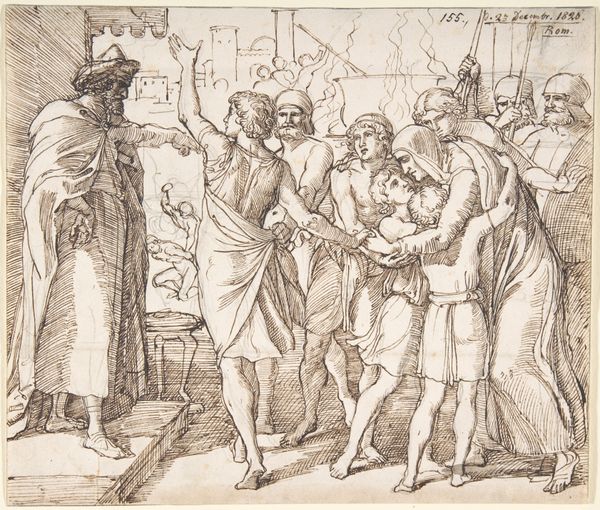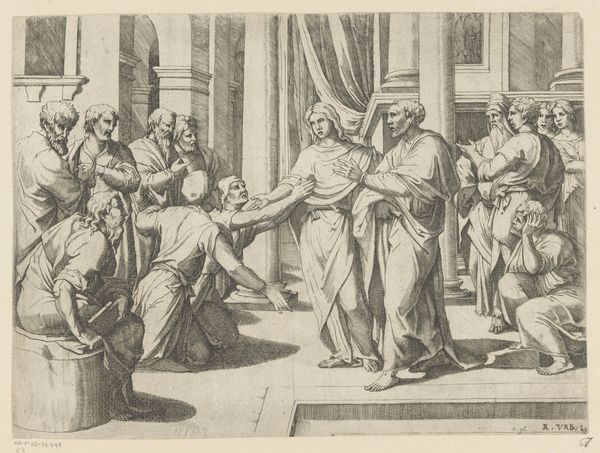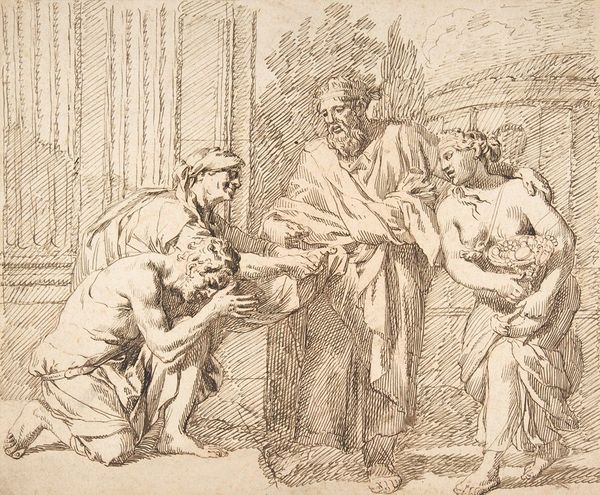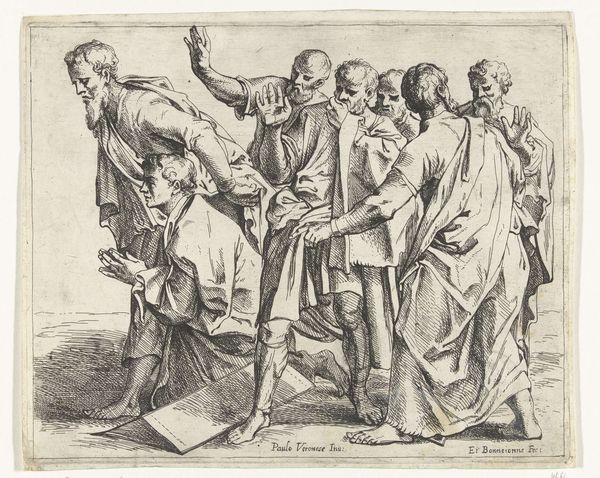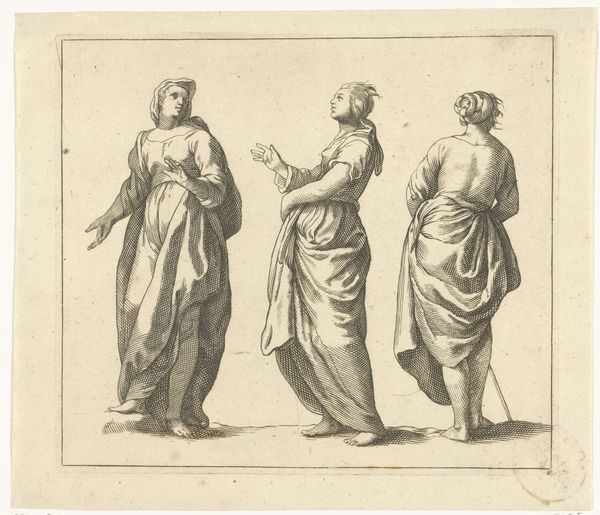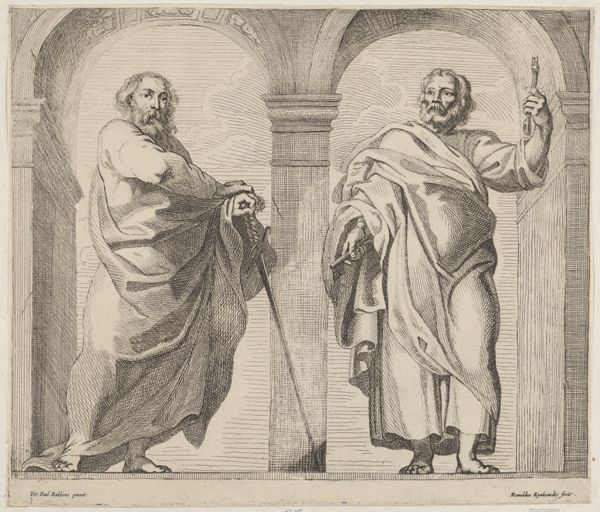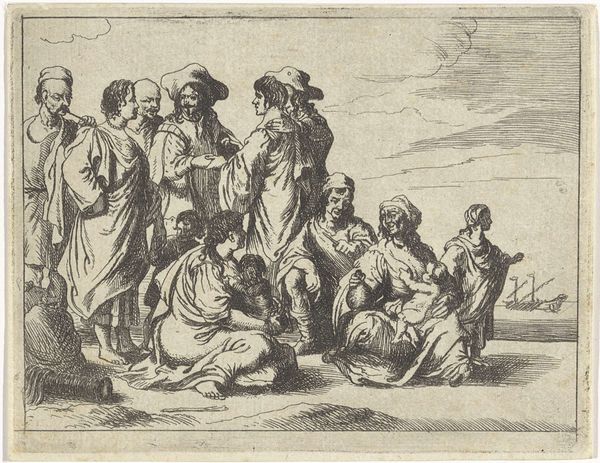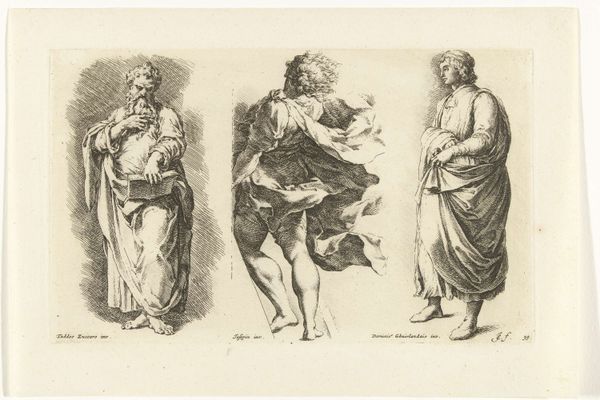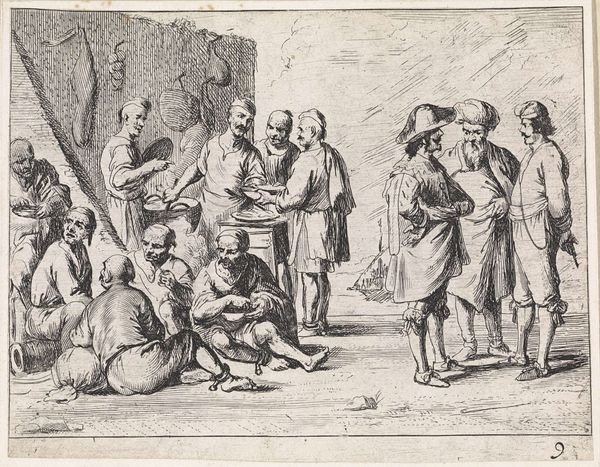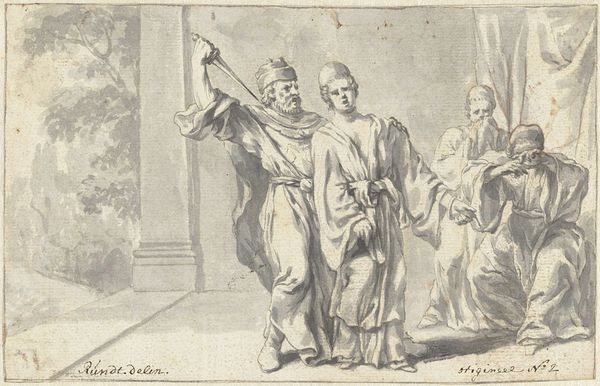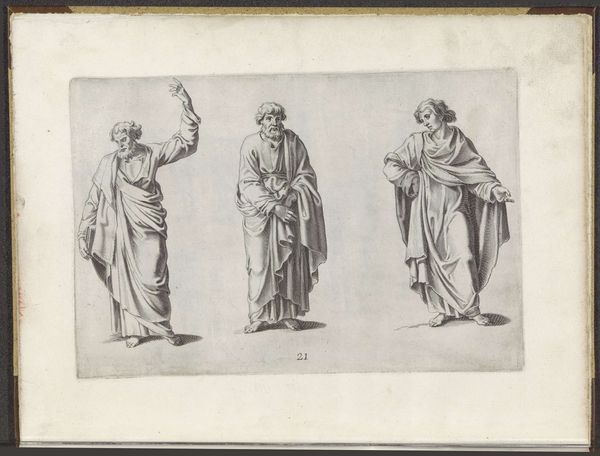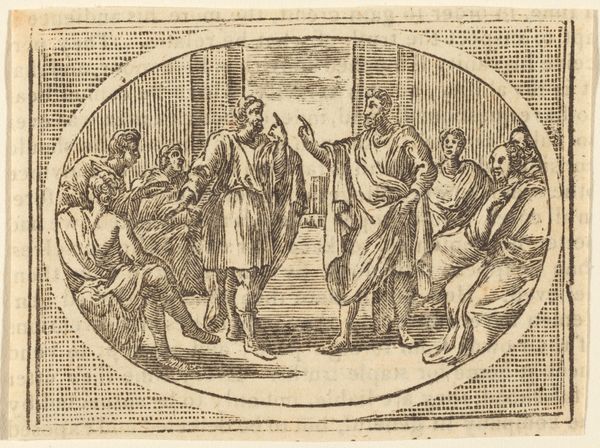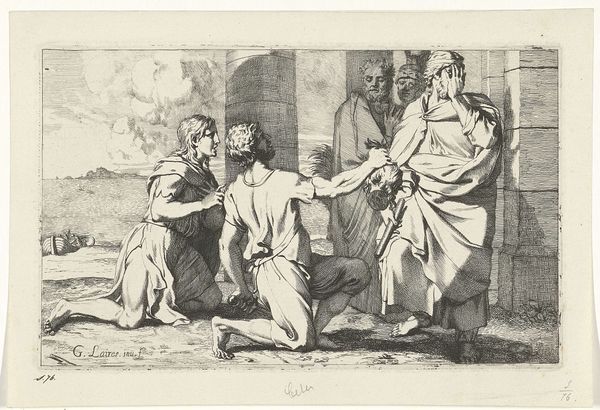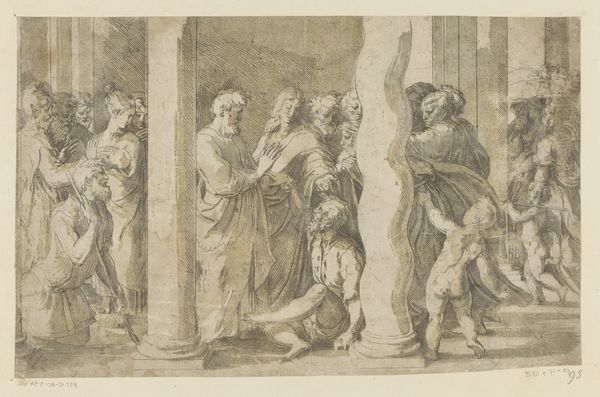
Tre stående mænd, de to yngre hver bærende en planke på skulderen, den tredje ældre i en eftertænksom stilling 1743 - 1809
0:00
0:00
drawing, paper, ink
#
drawing
#
figuration
#
paper
#
ink
#
ancient-mediterranean
#
genre-painting
#
history-painting
Dimensions: 193 mm (height) x 215 mm (width) (bladmaal)
Curator: This drawing, ink on paper, comes to us from Nicolai Abildgaard. It’s called "Three Standing Men." Abildgaard worked on it somewhere between 1743 and 1809. What are your first impressions? Editor: The mood is immediately somber. Despite the relative simplicity of ink on paper, there is this stark theatricality created by the men holding the beam—as if burdened by some historical destiny. Curator: Absolutely. Let’s dig into that theatricality. Look at the tangible, physical labor being depicted. Two younger men bear a plank—we can see the effort in their postures—while an elder figure watches pensively. It immediately asks the viewer to consider the weight of labor, the burden shouldered. Editor: And what symbols does that plank take on? It reads of structural weight, literally supporting. Yet it seems almost ceremonial in its bearing. It prompts associations to ancient rites, where burdens become allegorical. Are we witnessing an event, perhaps tied to the genre or historical painting that Abildgaard engaged with? Curator: It's certainly designed to evoke classical ideals, perhaps pointing towards ideas surrounding civic virtue, perhaps. Consider how labor was viewed then—often romanticized, certainly essential to social structures. The materials here, humble as they are, allow Abildgaard to investigate those power dynamics with a critical eye. Editor: Right, those symbolic implications resonate strongly. Notice how the poses channel classical sculpture, reinforcing that air of history. The older figure’s contemplative stance invites us to project narrative onto these anonymous characters, transforming labor into a question about responsibility and its inheritance. Curator: It’s also quite insightful to view Abildgaard's labor process here, layering thin applications of ink. He is very deliberately invoking a historical style by imitating past artisanal production processes of similar ink works, thereby questioning how such styles influence social behavior of the artist and artisan at work. Editor: Seeing this work today prompts reflection. These historical motifs carry forward through artistic history and have come to rest with the same burdens now shifted from shoulders onto our cultural memories. Curator: Agreed, it brings a critical light to production—historical and artistic—linking the physicality of work to enduring social questions. Editor: A profound intersection between then and now, visualized through symbol and process.
Comments
No comments
Be the first to comment and join the conversation on the ultimate creative platform.
